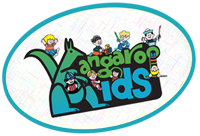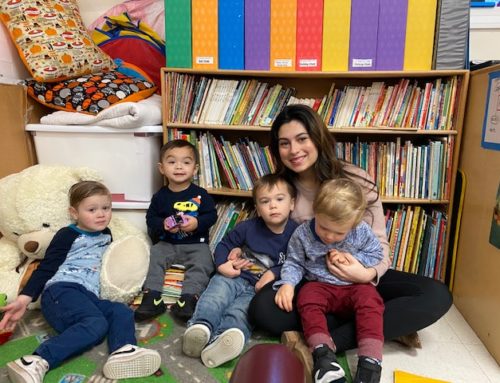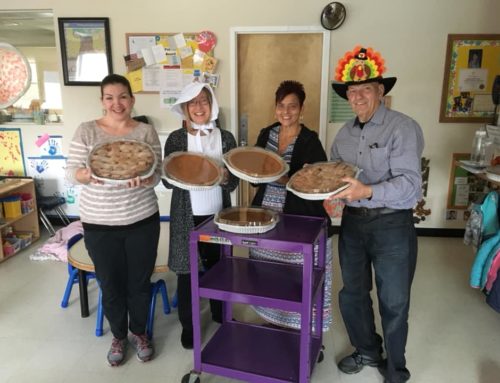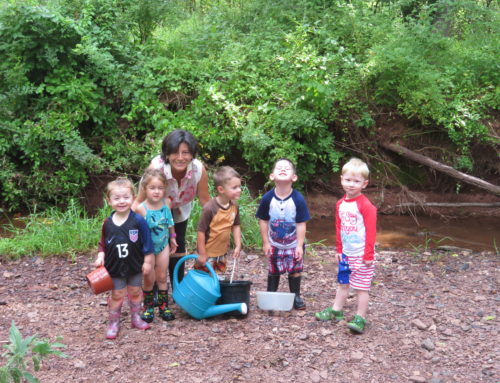If you ever wondered about some of the terms your preschool teacher uses here is a great explanation from an article in Young Child…
Developmentally appropriate? Scaffolding? Your child’s teacher might use language other educators understand but may be new to you. This list of commonly used early childhood terms can help you understand what the teacher means when she talks about what and how your child is learning.
Approaches to learning: How children become curious about learning new things. It is also how children respond to learning situations. Curiosity about the world, initiative and problem solving, and focused attention and persistence are just a few approaches to learning teachers and families hope to foster.
A teacher might say: “Your child has some wonderful approaches to learning. She’s very persistent when working on puzzles.”
Cognitive development: How children learn to think, make decisions, and solve problems.
A teacher might say: “We want to build the children’s cognitive development, so today we conducted a science experiment, and the children tried to predict the result.”
Constructive play: When children use blocks, LEGOs, or other materials to make buildings or towers.
A teacher might say: “Rebekah made a pretty complicated castle during her constructive play today!”
Developmentally appropriate practice (DAP): Teaching strategies that are based on knowledge of how young children develop and learn, what makes each child unique, and the child’s community and family culture and home language. DAP activities are neither too difficult or too easy, but just right. For example, in most cases it is developmentally appropriate to introduce a 4-year-old to the letters in his name, with the expectation that over time he will learn to write his name on his own. On the other hand, it is not developmentally appropriate to ask 4-year-olds to write letters over and over again on worksheets.
A teacher might say: “In this classroom, we don’t believe that worksheets are developmentally appropriate.”
Dramatic play: When children pretend to be someone else, such as a firefighter or doctor, and they make up scenes and dialogue.
A teacher might say: “We’d love to have you bring a few items related to going to work for the children to use in their dramatic play.”
Exploratory play: When children discover how materials work. For example, when playing with water or sand, children explore how to fill and empty buckets.
A teacher might say: “Today Andre discovered how to use a bucket to build a sand castle during his exploratory play!”
Environmental print: The words that are all around us, such as store signs, a menu board, or a poster with the daily schedule.
A teacher might say: “Your child can learn a lot about reading and writing just by seeing environmental print.”
Physical and motor development: How children use their bodies to make large movements with their legs and arms (gross motor) and small movements with their fingers and hands (fine motor). Children learn with their legs and arms when they run, climb, or ride a tricycle. They learn with their fingers and hands when they cut with scissors, use a pencil, or construct a puzzle.
A teacher might say: “We need to support children’s fine motor development so we are using playdough to strengthen fingers.”
Print awareness: When children understand how print works. For example, after listening to lots of stories, children notice that letters make words, words make a story, and reading goes from left to right in English.
A teacher might say: “Maritza’s print awareness is developing. She’s picking up books right-side up and is starting to turn the pages of the book herself.”
Self-regulation: How children learn to control their feelings and their bodies. For example, if a child wants to play with a toy her friend is using, she asks for a turn rather than grabbing it.
A teacher might say: “I’ve seen so much grown in children’s self-regulation. At the beginning of the year children sometimes just take a toy they want even if another child is using it. Now I hear them ask if they can use it..”
Social and emotional development: How children learn about feelings. It helps them feel good about themselves and helps them understand the feelings of other people.
A teacher might say: “We are supporting children’s social and emotional development by reading books about friendship.”
Scaffolding: When an adult helps children learn at a faster rate and more than they would on their own. For example, when an adult holds a child’s hand as he goes up the slide ladder, the adult is scaffolding his learning to climb.
A teacher might say: “Robert is almost ready to climb up the slide ladder on his own, but not quite. I’ve been helping him by holding his hand and scaffolding his climbing skills until he’s able to do it without my help.”
– See more at: http://families.naeyc.org/learning-and-development/music-math-more/12-teacher-terms-demystified#sthash.jpQ7aOH9.dpuf
Source: Adapted from “Talking About Education With Families” by Angel Sancho Passe, Teaching Young Children 6 (4): 6-7 – See more at: http://families.naeyc.org/learning-and-development/music-math-more/12-teacher-terms-demystified#sthash.jpQ7aOH9.dpuf





